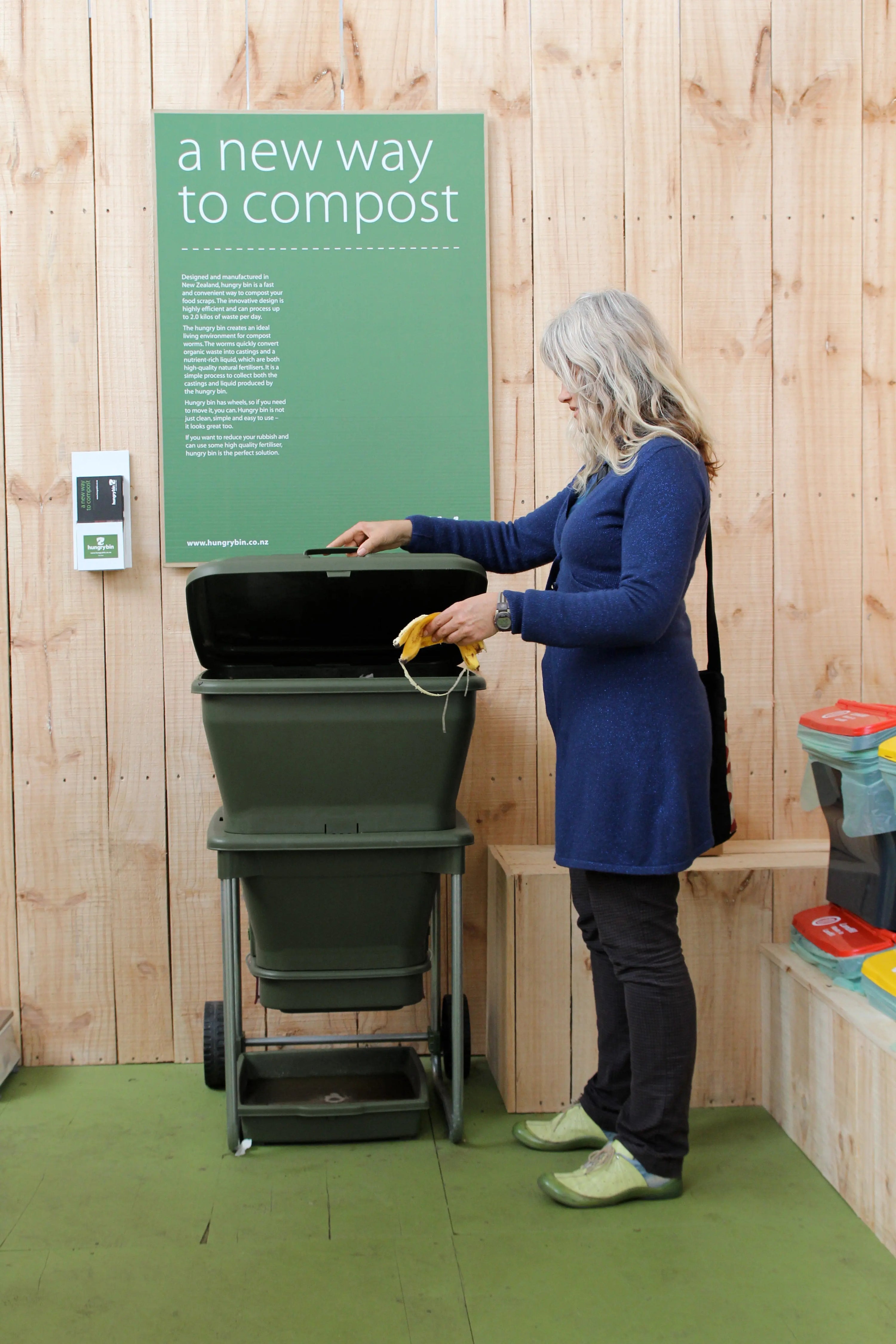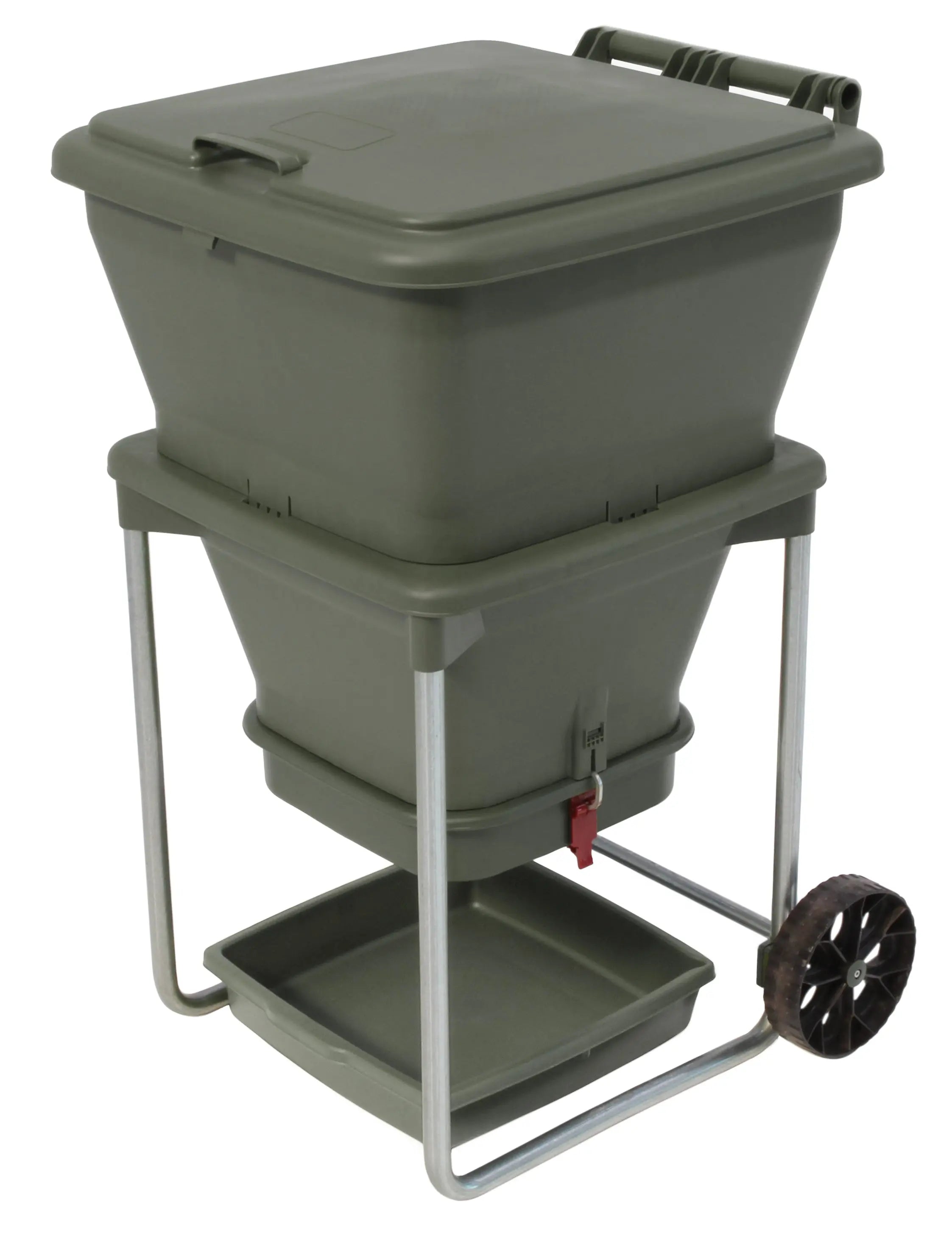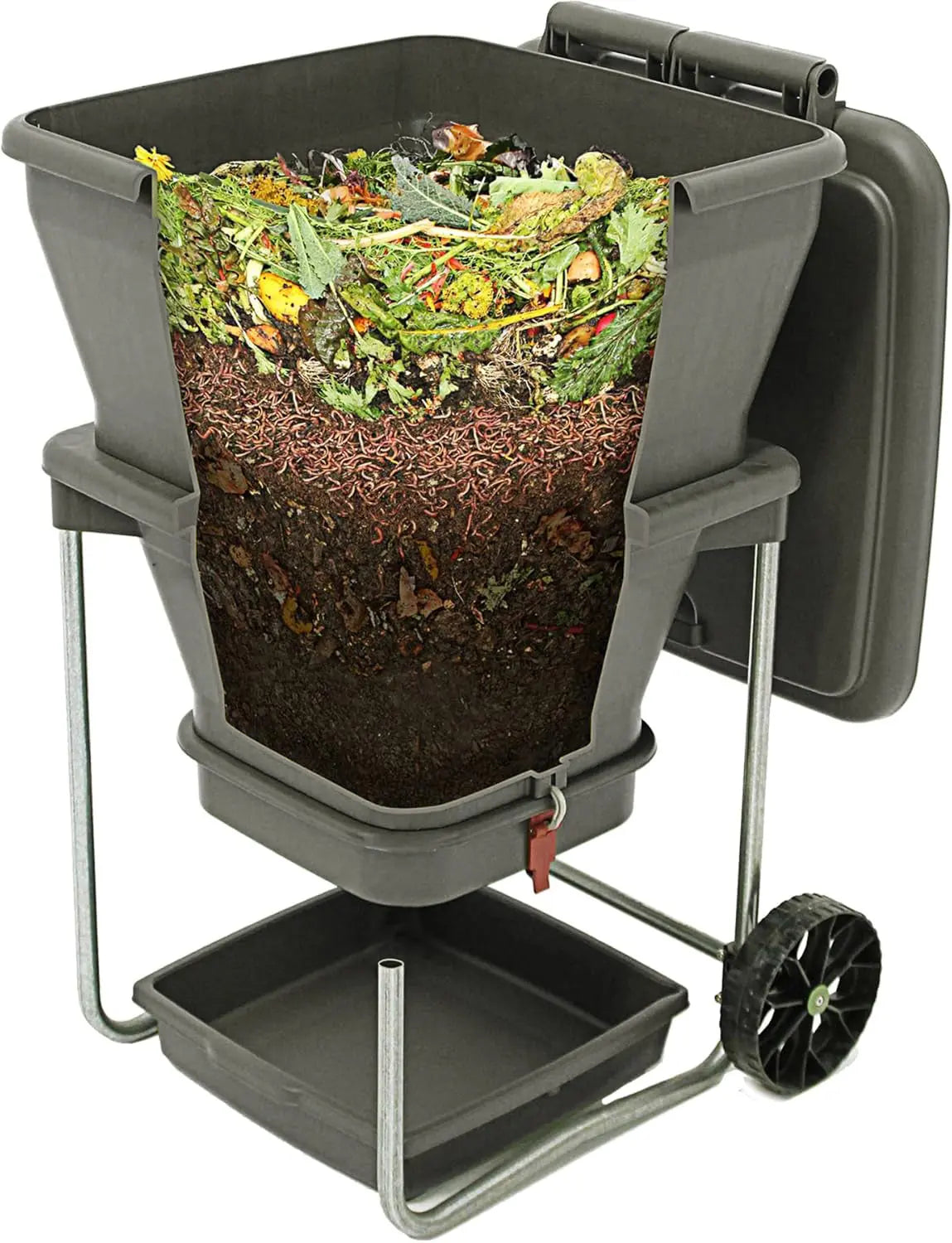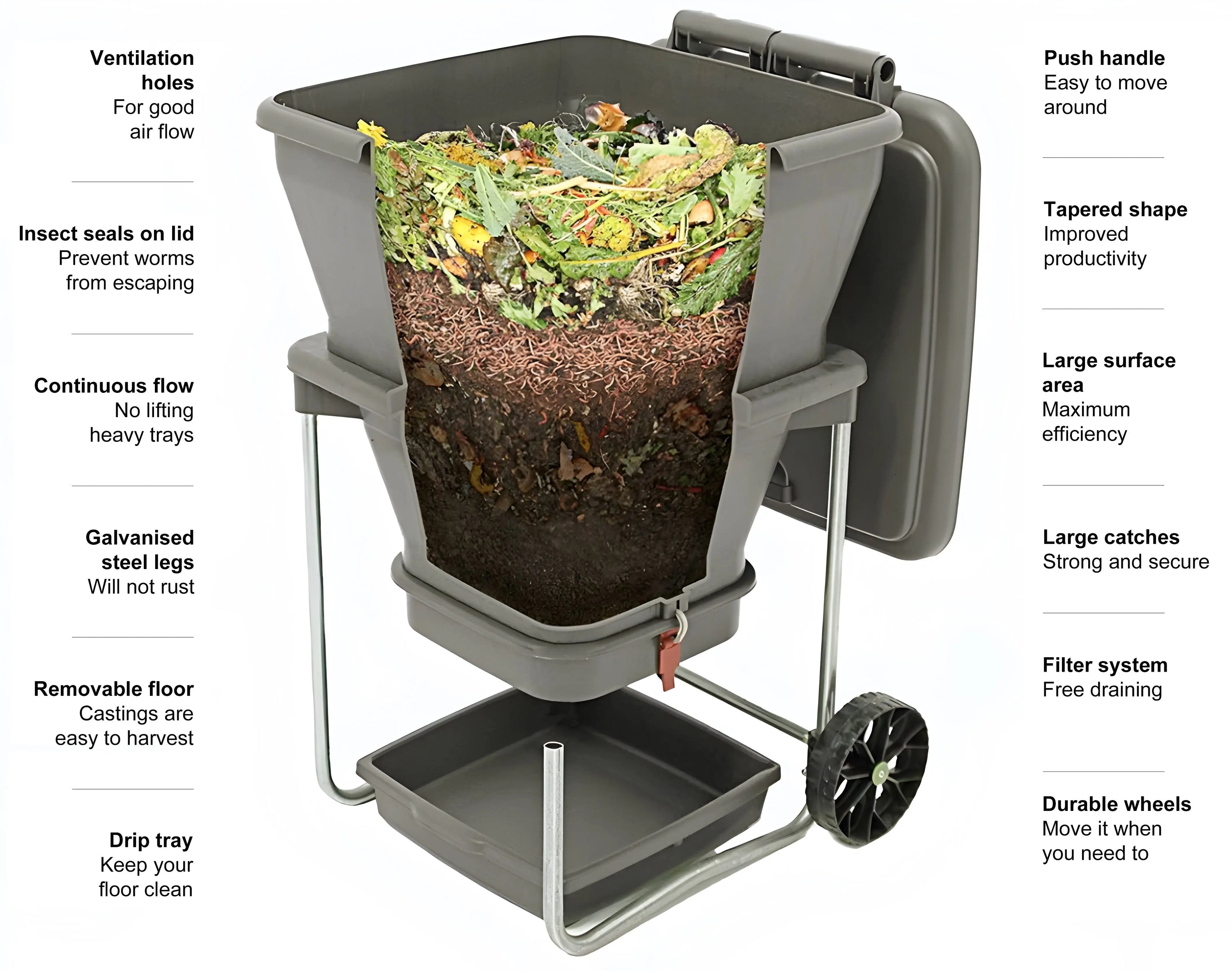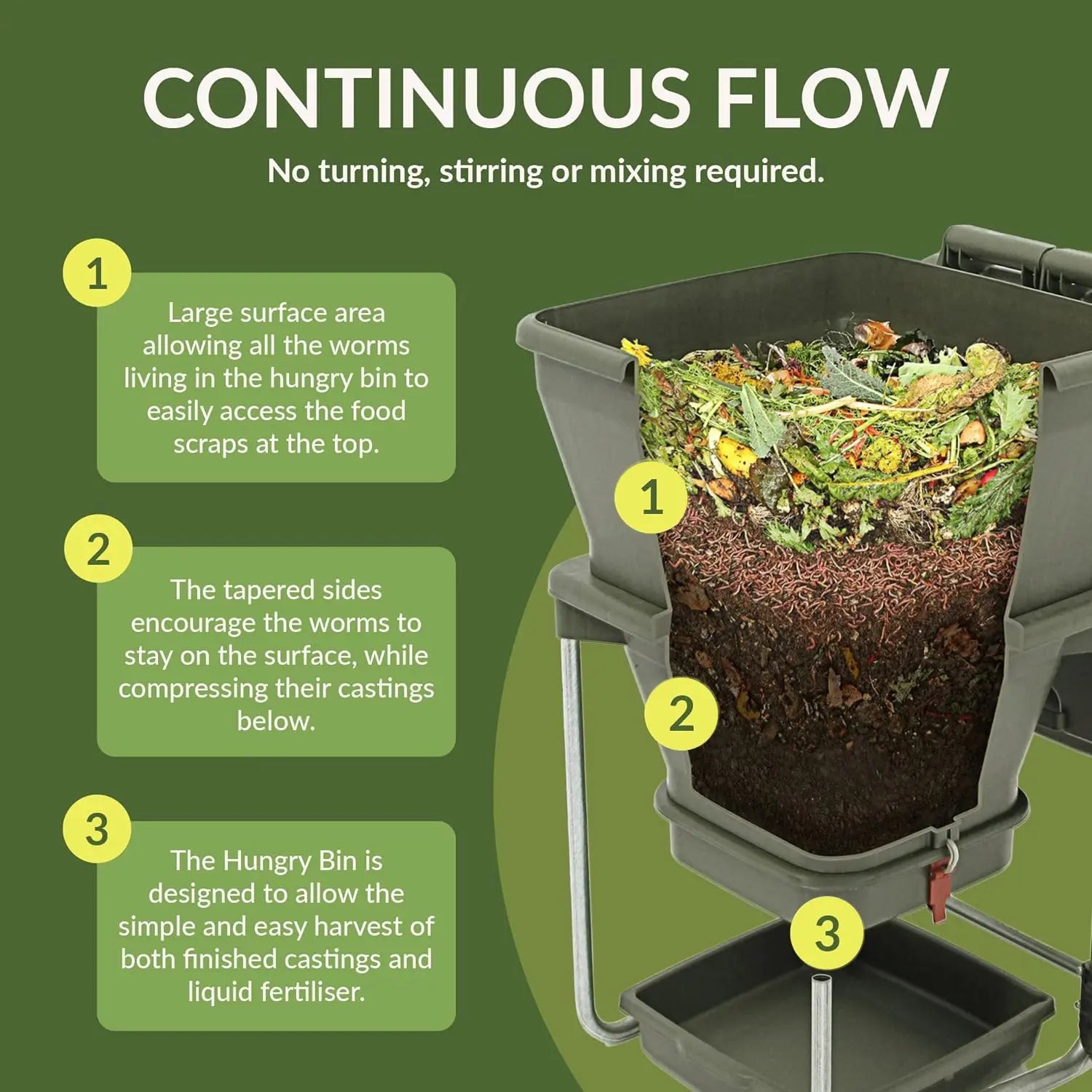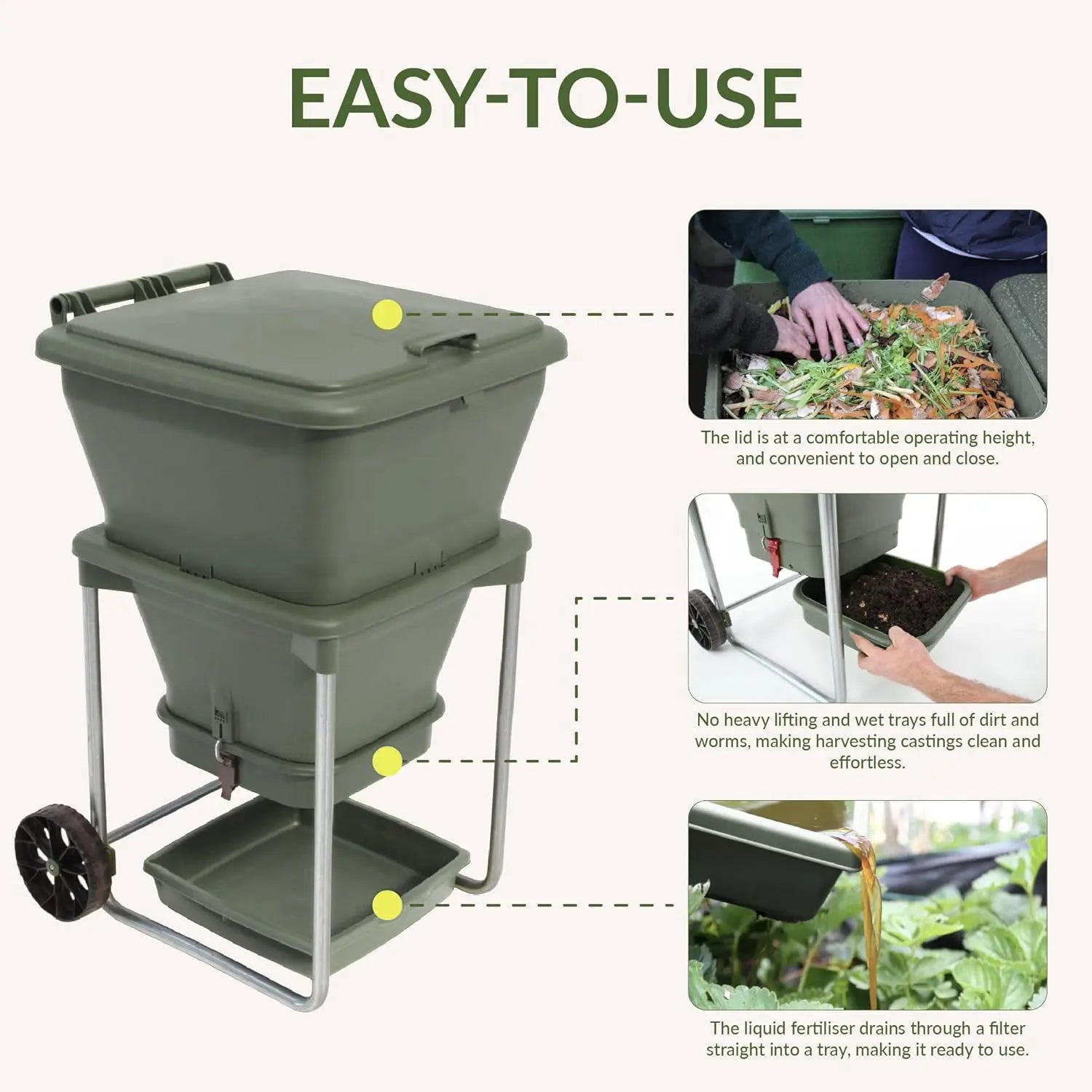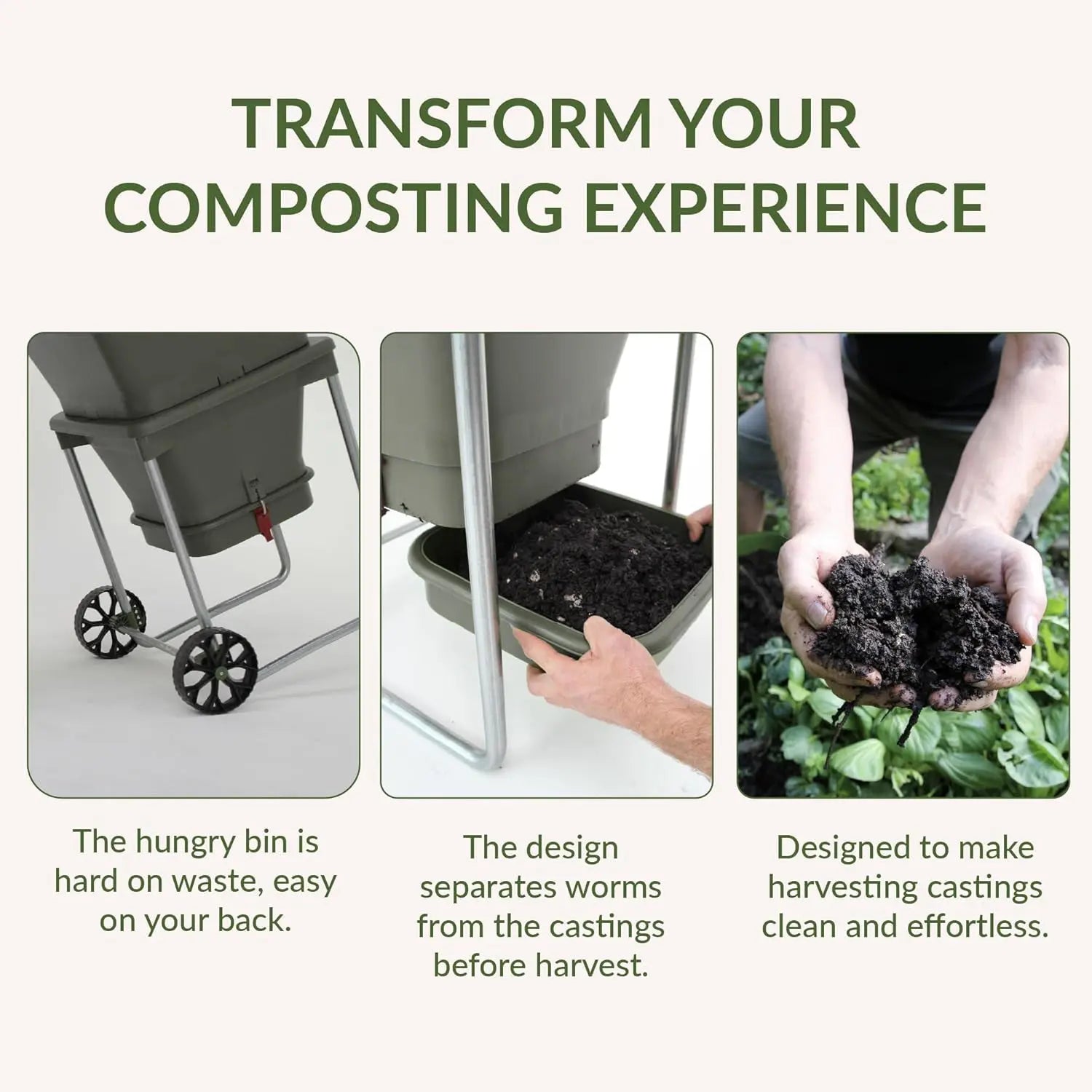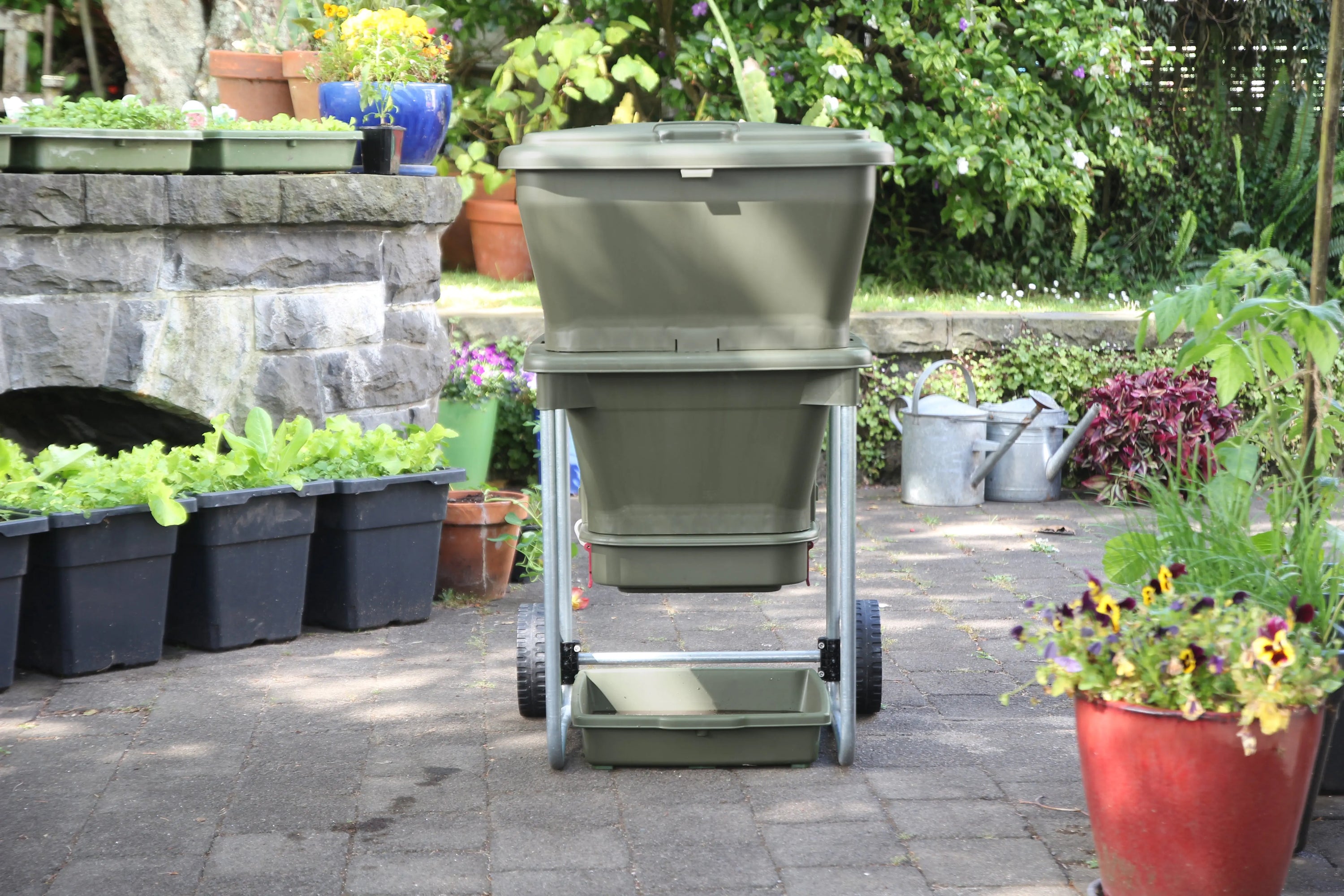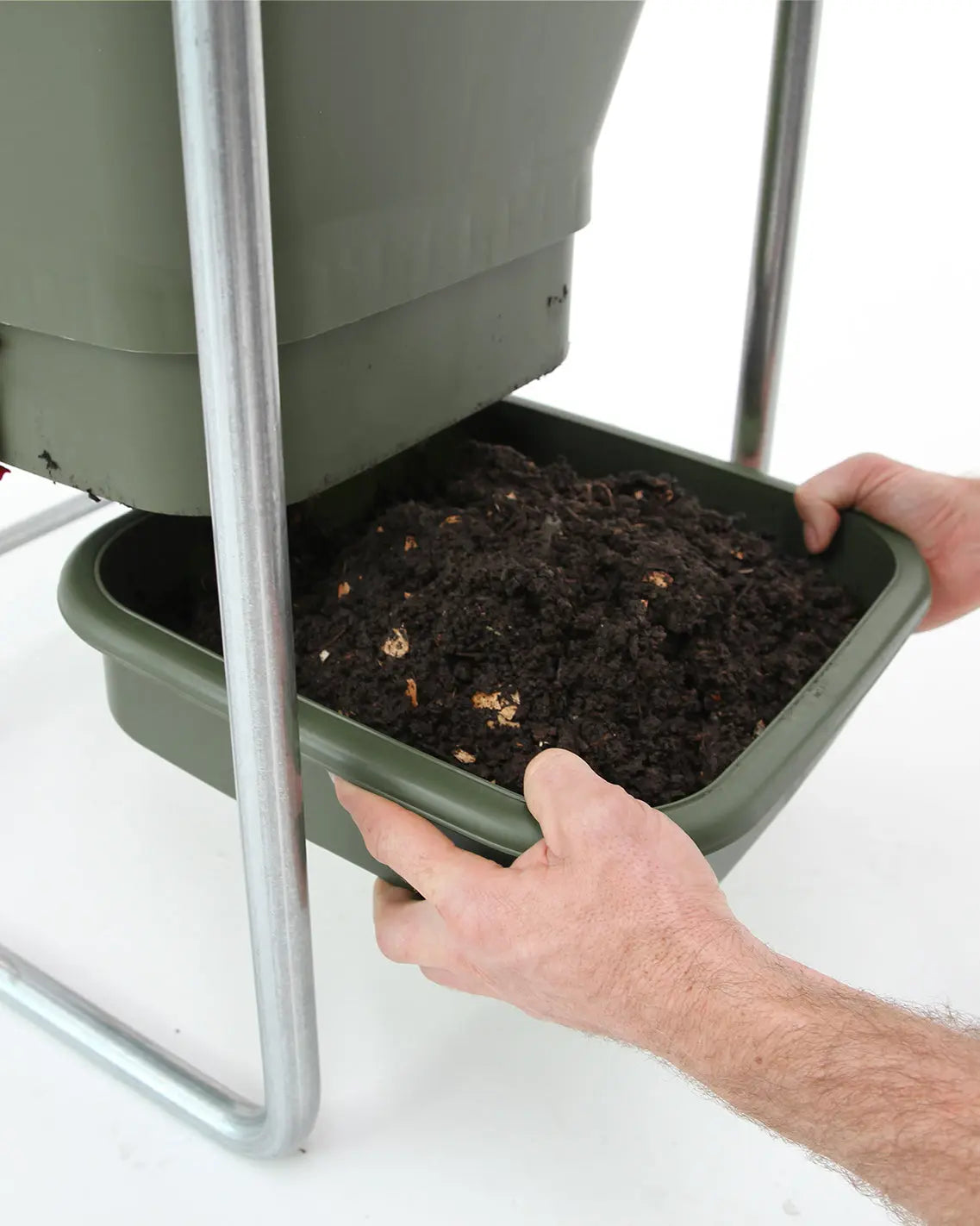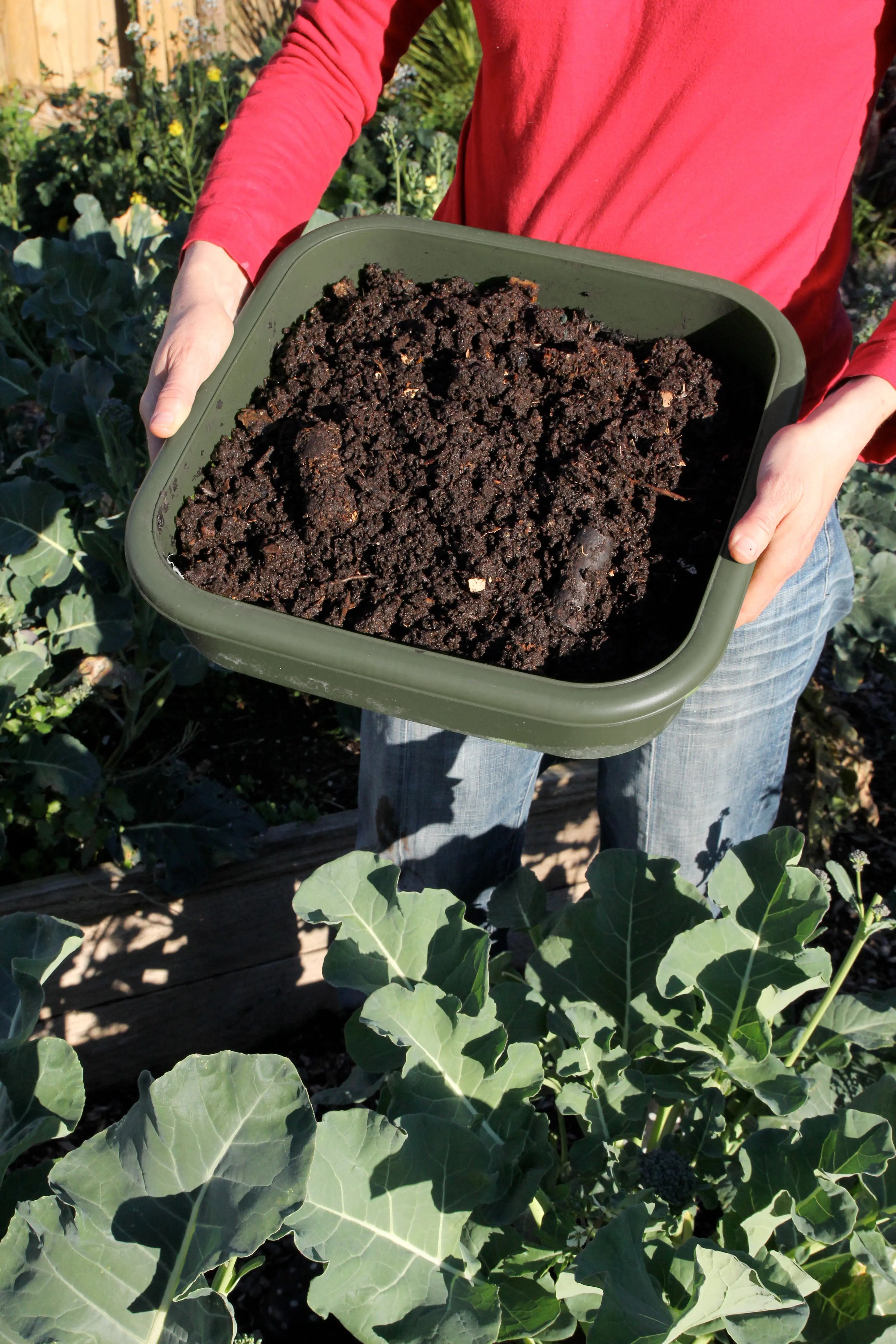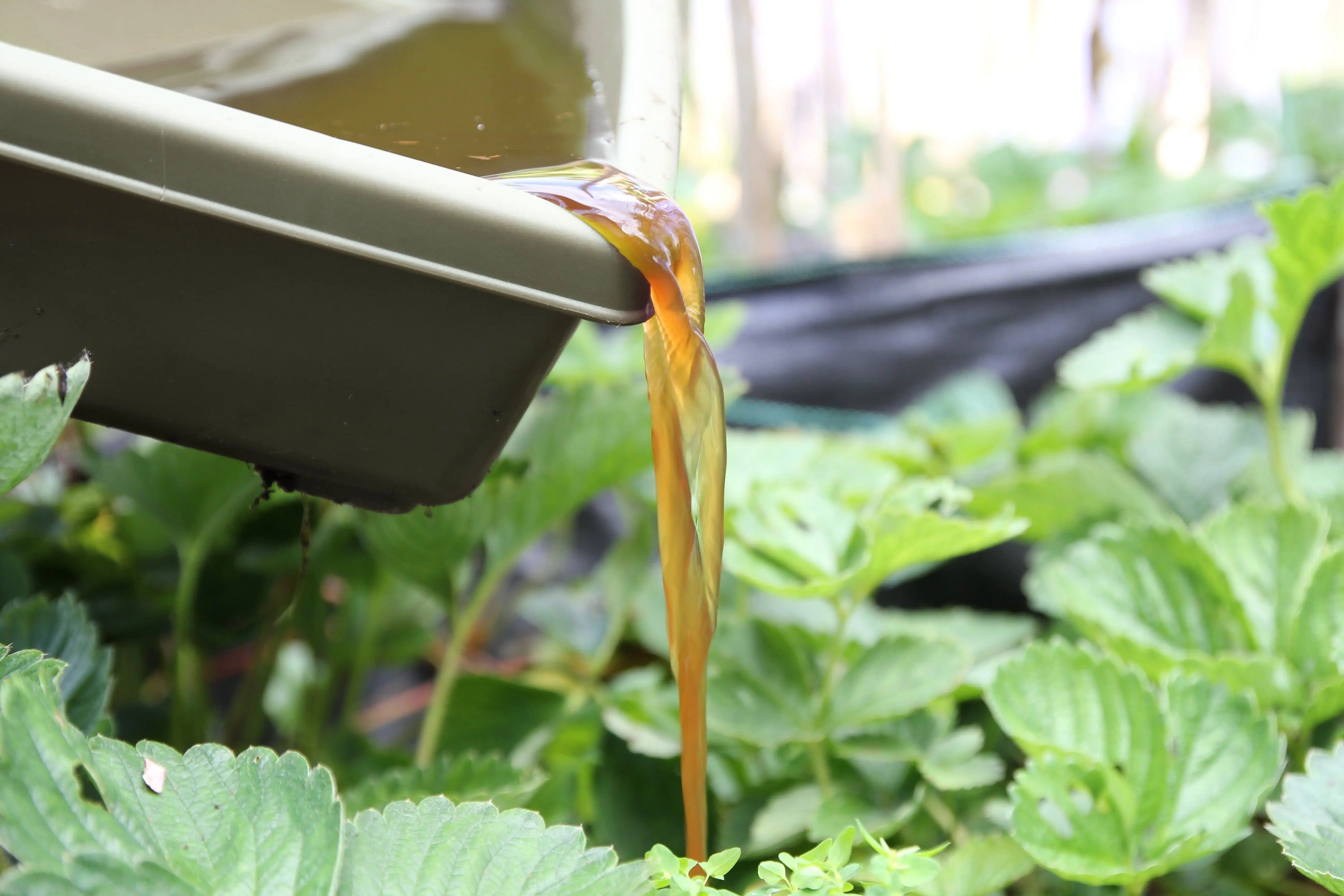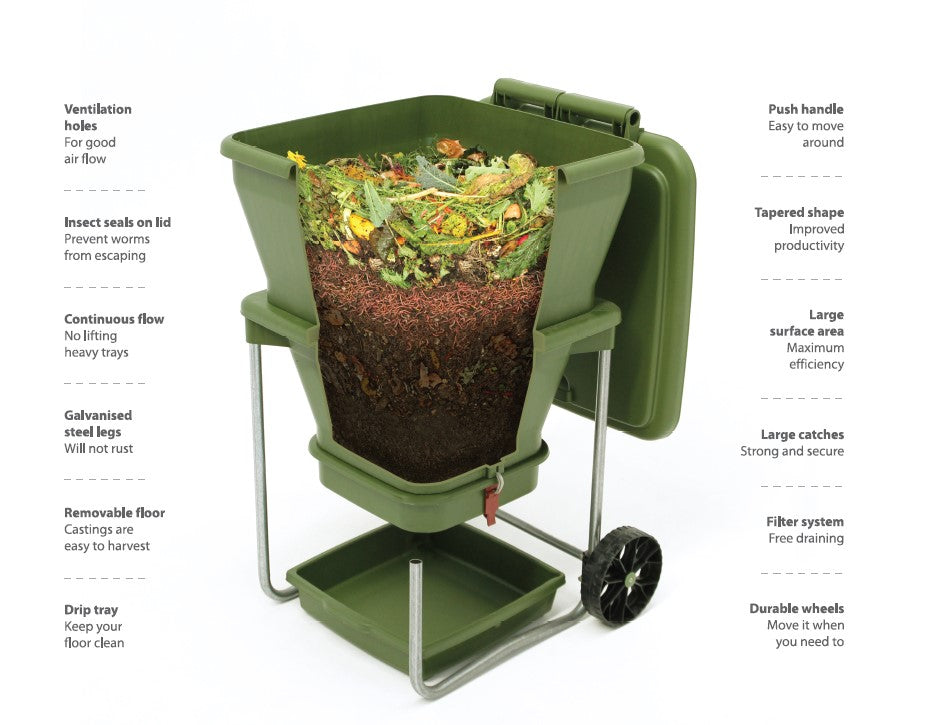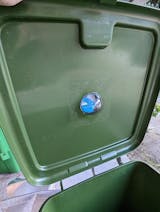NOTE: photo shows a modification I made to the product to let light into the top. IT IS NOT PART OF THE STANDARD PRODUCT.The extra light keeps worms in the material and discourages them from climbing up sides.Pros: - Easy to set up - Solid construction - Can be easily moved. Which is important because when fill it gets HEAVY. - Been using for 6 months and it's holding up well. Bottom latch works once you learn how to use it. - Continuous feed system works surprisingly well. You can take off the bottom and only SOME finished material falls through.Cons: - Lid is problematic when kept closed: - Worms tend to crawl up sides because it's dark (I experimented with transparent window on top to fix this, but too much moisture STILL an issue) - Too much moisture is retained and can lead to mites. - Internal heat build-up can be an issue. - Worms love to congregate in the bottom, so separating them from the finished castings is a bit of work.Misc recommendations: - Get a cheap "Duel, wired Digital Thermometer" (e.g. B0957XFHCK www.amazon.com/gp/product/B0957XFHCK) put one end into the middle of the bin and make sure the temperature doesn't get too high. If it starts to get a heat spike from decomposition, I use as broom handle to create "columns" all the way to the bottom to allow air to pass through.- I initially modified my bin to add a "window" in the lid using an old security cam dome to allow light in (this keeps the worms from climbing up sides). But I still struggled with too much moisture which lead to compost mites (NOT a health risk but ewww). SOLUTION: just put some screen material (like what is used for a screen window or door) over the top and leave the lid open. Controls the moisture, keeps pests out like fruit flies.- Buy and use Food Grade Diatomaceous Earth. This controls insect pests and does not hurt worms. In fact, it serves as grit to aid in their digestion!- If you use coffee grounds, buy and use Oyster Shell Flour to balance out pH levels. Also serves as grit.- Use a paper shredder to shred cardboard boxes. Just make sure to NOT shred labels or tape. Soak cardboard in water and wring out before using. Worms LOVE pizza boxes.Manufacturer recommendation if they read this:Include some kind of secure screen lid that fits security. It would be used when the lid is open to control moisture. And when the lid is closed, it would just to keep worms better contained.

